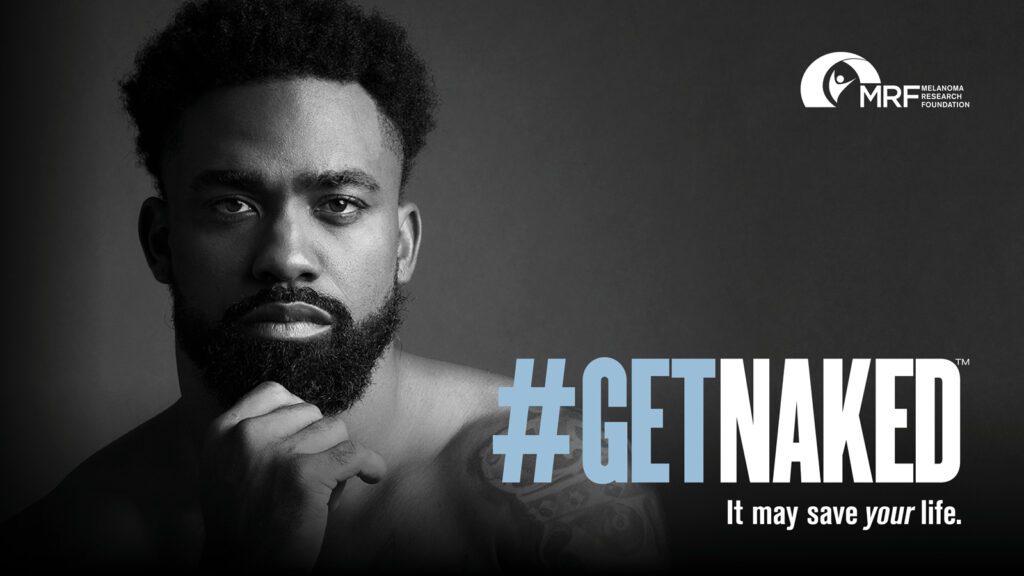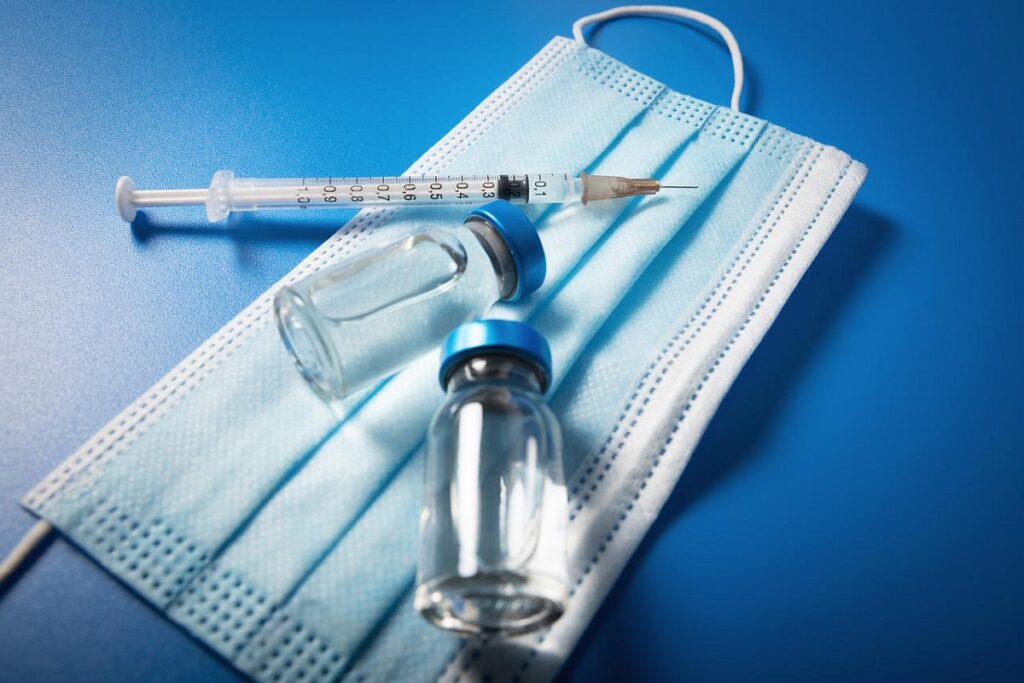For Raheem Mostert, Coach Chop was more than just a coach.
As a young boy starting his first day of Pop Warner football at 6 to 7 years old, Mostert quickly found a profound mentor in Coach Chop—one that undoubtedly helped lead him to his success today as running back for the Miami Dolphins.
“From that moment on, he took me under his wing, teaching me more than just football,” writes Mostert in his blog for the Melanoma Research Foundation’s (MRF) May Melanoma Awareness Month. “He took me in as one of his own. He taught me hard work pays off and to be a good person. He was my example—the father I wanted to be to my future children and the husband I wanted to be to my future wife. He showed me what unconditional love was.”
So when Coach Chop was diagnosed with melanoma in 2019, followed by metastatic brain cancer caused by melanoma, the news was devastating for Mostert.
Today, Mostert is partnering with MRF as their 2024 #GetNaked campaign spokesperson to help beat melanoma before it can begin.
Why it’s time to #GetNaked
Melanoma is the deadliest form of skin cancer, explains MRF, but can be highly treatable when caught in the early stages. And indeed the triad strategy of prevention (using sunscreen), screening (visiting your dermatologist), and persistence (maintain consistent skin care and screening habits) seem to be the key to catching melanoma before it can take hold.
Mostert understands this all too well. As he explains, one day his wife noticed a mole on his skin that “did not look good.” After a visit to his dermatologist, Mostert soon removed a number of precancerous moles on his abdomen.
“[My dermatologist] informed me that it is a myth that people with darker skin tones do not get skin cancer, and in fact, people of color often get diagnosed with skin cancers late, making it harder to treat,” writes Mostert. “She stressed the use of sunscreen, and because of my new history, requested to see me every 6 months for a skin check. With this knowledge, I began to respect both my body and the sun in new ways.”
Luckily, as MRF explains, keeping on top of your dermatological health is easy and starts at home with good daily skin care practices. The first step?
Wear sunscreen…even on cloudy days
While it is easier to remember to slather on the sunscreen on a hot, sunny day on the beach in July, it is often the somewhat overcast days that can do the most damage to your skin. How many times do we remember getting home after an overcast day and wondering, “Why is my skin so rosy?!”
So, to combat this, make sure you apply at least broad spectrum SPF 30 sunscreen. And don’t just apply it once, make sure you reapply every two hours you are outside—as well as after any swimming you may do.
“Because of my job, playing football in the NFL for the Miami Dolphins, I still spend hours a day in the sun,” writes Mostert. “I just do it differently now. Just like putting on my cleats, putting on my sunscreen has become part of my routine. Off the field, I still enjoy being outdoors whether it’s playing golf or spending time with my three sons whom I have shared my knowledge of wearing sunscreen…the knowledge Coach Chop unknowingly gave to me. Our boys are young, but already know the importance of wearing sunscreen. Knowledge is wealth, and we don’t play until our skin is protected.”
But sunscreen isn’t the only tool in our arsenal.
Wear protective clothing: Luckily, there are a number of fantastic options today for protective sun wear. Especially with the rise of hiking and backpacking culture, sun shirts, sun sleeves, sun hats, and even UV-reflective umbrellas are at your disposal when it comes to keeping your skin safe outside.
Be sure to wear polarized sunglasses too! Your eyes are just as sensitive as your skin to the sun.
Seek shade: It might feel good to lay in the sun on a warm day, but if you are going to be out for a while, be sure to find a shady spot to relax. Sun damage starts earlier than you realize and the effects can be long lasting.
Use extra caution near reflective environments: Water, snow, and sand are silent co-conspirators to the sun when it comes to UV radiation. These surfaces are reflective, which means that you are not only fighting sun exposure from above, but below as well.
In fact, in ocean or snow-covered environments, sun damage can get so bad as to cause sun poisoning, or even temporary blindness from sun burnt retinas.
Do not burn: If you feel hot, get out of the sun. Sun burns can sneak up on anybody at any time.
“Severe sunburns, especially during childhood, increase your risk of developing melanoma and other skin cancer,” explains MRF. “Just one blistering sunburn can double your chances of developing melanoma later in life.”
So when you are out with your family, make sure your children don’t burn—they’ll thank you later!
Avoid intentional tanning and indoor tanning beds: Tanning salons used to be all the rage. Luckily, the tide is slowly shifting to artificial tanning—and for good reason.
According to MRF, “using tanning beds before age 30 increases your risk of developing melanoma by 75 percent.” And not only that, your risk only increases with repeat visits.
“Research also suggests a strong dose-response relationship—meaning the more sessions, hours and years spent tanning, the higher the risk of developing melanoma and other types of skin cancer,” explains MRF.
And this is important to remember because melanoma is an equal opportunity risk when it comes to different age groups. “Melanoma is the most common form of cancer for young adults 25-29 years old and the second most common form of cancer for young people 15-29 years old. Melanoma is the leading cause of cancer death in women 25-30 years old and the second leading cause of cancer death in women 30-35 years old,” cites MRF.
But even with all of the preventative measures, as MRF and Mostert remind, it is really important to #GetNaked.
Check your skin: If you find suspicious moles on you or a loved one, don’t wait to get it checked out. Make an appointment to visit your dermatologist as soon as possible. This is one of the key steps to stopping melanoma before it can take hold.
“Detecting melanoma when it’s early enough to treat could mean the difference between life and a life-threatening illness,” says MRF.
Mostert and his wife understand the importance of screening and repeat visits to their dermatologist all too well.
“[My wife’s] long hours playing soccer outdoors are still catching up with her,” writes Mostert. “She had to have moles removed from her back and ear. Both areas came back precancerous. She had to return 3 times to have skin removed from her ear, lending way to healthy skin tissue known as the ‘margin of safety.’ With our experience and knowledge we now have, both Devon and I feel it is important to inform young athletes playing sports outdoors about the importance of wearing sunscreen, a hat and protecting their skin.”
Know the signs: If you see a suspicious mole on yourself, a loved one, or a friend, it is important to not only say something, but know the signs. While there are many forms melanoma can take, a few key signs to know, as explained by MRF, include:
- A change on the skin—this could be a new spot or a change in color, shape, or size of a current spot
- A spot, sore, or mole that doesn’t heal, becomes painful or tender
- A mole that becomes itchy or begins to bleed
- A spot, sore, mole or lump that looks shiny, waxy, smooth, or pale
- A firm red lump that bleeds or appears ulcerated or crusty
- A flat, red spot that is rough, dry, or scaly
- A black/dark spot or streak under a fingernail or toenail (that doesn’t come from previous trauma to the nail)
Getting involved with Melanoma Awareness Month this May
“A quick four weeks after being diagnosed, at the age of 53, Chop, also known as Michael Stokes, passed away on June 14, 2019,” writes Mostert.
“The man that molded me into the man I am today was gone,” he continues. “He was more than my first Pop Warner football coach, he was my father figure. He stood by my side for over 20 years and is one of greatest men I will ever know. My heart is still unrecognizable and will never be the same. In his name, I will continue to raise awareness around melanoma, stress the importance of prevention and wearing sunscreen and be a huge advocate for annual dermatological skin checks.”
Taking care of your skin and making sure you get screened on a regular basis is important to stop melanoma before it starts. And if you want to get more involved in the month of May, MRF has a number of ways that you can do that.
Use the #GetNaked hashtag: All month, MRF is spreading the news about melanoma, and you can too! Whether it is sharing your own story or sharing MRF resources and educational materials.
Visit Time Square: If you are in New York, check out the heart of the city in Times Square where MRF has their #GetNaked billboard displayed at 1500 Broadway Spectacular, from May 1 to July 31. Maybe while you are there you can start the conversation person to person.
These are just a couple things you can do during the month of May for melanoma Awareness Month, but remember, any month is a good month to talk to your friends and family about melanoma.
It could even save a life.




